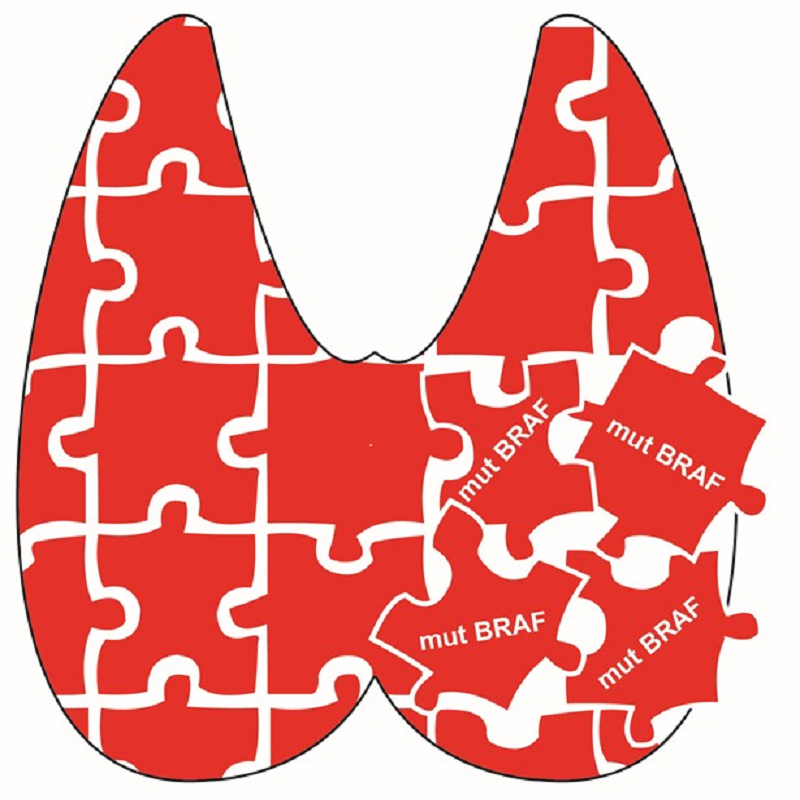
The BRAF oncogene: a determining factor in patients with papillary thyroid carcinoma

2018-03-12
Researchers at the Alberto Sols Biomedical Research Institute, a joint centre with Spain’s Higher Council for Scientific Research (CSIC) and the Universidad Autónoma de Madrid (UAM) with the participation of Móstoles University Hospital, have studied the BRAF oncogene as a prognostic factor in thyroid cancer. The results show that patient age is a poor prognostic factor solely in those with the BRAF mutation, but not in those that are negative for this mutation. The paper was published in Journal of Clinical Oncology.
The incidence of thyroid cancer has increased more than five-fold over the last three decades. Despite this, the mortality from this cancer is generally very low, particularly among young or middle-aged patients. In patients over 45 years of age, however, the risk of mortality was thought to be gradually greater so they received more aggressive treatments. Although this age cut-off of 45 years has remained unchanged for many years in all the clinical practice guidelines, the evidence was scant and some authors had called this cut-off into question.
Now, a study involving the collaboration of 11 research centres from six different countries with the participation of 2,638 patients has shown that the main determinant for mortality in older individuals is the presence of the V600E mutation in the BRAF oncogene. In addition, the study has confirmed that the risk begins to be significant starting from 60 years of age and not at 45, as was commonly assumed previously.
In the study, published in Journal of Clinical Oncology, led by Johns Hopkins University School of Medicine, Baltimore, the participants included the Spanish researchers Pilar Santisteban and Garcilaso Riesco-Eizaguirre from the Biomedical Research Institute (IIB), a joint UAM-CSIC centre, and Móstoles University Hospital; they also both belong to CIBERONC (the Cancer Networked Research Centre). The paper was also funded through the Spanish Ministry of Economy, Industry and Competitiveness and the Spanish Association against Cancer (AECC).
The BRAF oncogene
The BRAF oncogene is one of the most frequent genetic events in human cancer in general. In papillary thyroid carcinoma, it appears in 45% of patients. Its value as a prognostic marker has been widely discussed with most of the studies being single-centric and with a limited number of patients.
“In 2013, we started an international collaboration among multiple hospital centres by creating an international group to study BRAF, producing five publications in highly prestigious journals. These studied the impact of BRAF and other variables in the prognosis of these patients,” the authors describe.
“The final outcome of this collaboration,” they added, “is this paper that can alter the clinical practice guidelines in thyroid cancer. Here we show that age is associated with higher mortality only in those patients with the BRAF mutation. Furthermore, the age above which the risk increases is 60 years. This study has a great deal of clinical relevance because it calls into question the age of 45 years as a universal factor for poor prognosis.”
For the authors, the current clinical practice guidelines and the current risk stratification systems have to introduce changes to incorporate these novelties: “On the one hand, age only increases the mortality risk in those tumours with mutated BRAF and, on the other hand, the age after which this risk increases is 60 and not 45. This would allow a more customized treatment to be applied to patients according to the real risk of each one, minimizing side effects.”
See full notice in the download area

